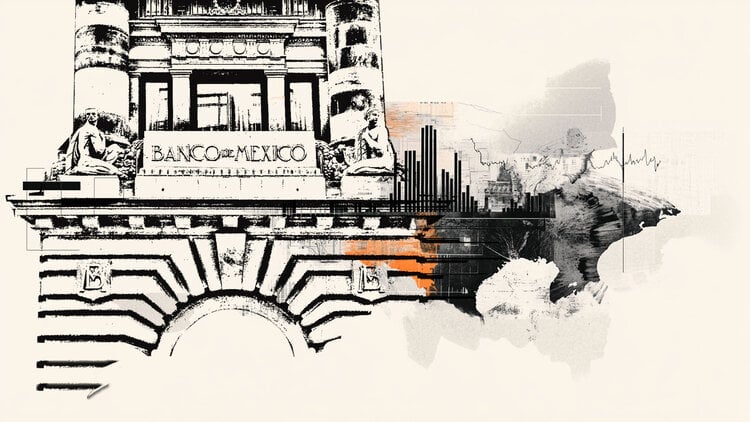Banco de México revealed its Quarterly Report for January –March 2025, in which the central bank revised its Gross Domestic Product (GDP) forecasts for 2025 and 2026 downward, compared to the last report of 2024.
Inflation in 2025 is expected to rise, while Banxico Governor Victoria Rodriguez Ceja noted that “going forward, it could continue calibrating the monetary stance and consider adjusting it by a similar amount as May 50 bp cut.”
Key Quotes
- Forecasts 2025 GDP growth at 0.1% versus 0.6% in previous report.
- Forecasts 2026 GDP growth at 0.9% versus 1.8% in previous report.
- Forecasts average annual headline inflation in Q4 2025 at 3.3% vs estimate of 3.3% in previous quarterly report.
- Forecasts average annual core inflation in Q4 2025 at 3.4% vs estimate of 3.3% in previous quarterly report.
- Forecasts average annual headline inflation in Q4 2026 at 3.0% vs estimate of 3.0% in previous quarterly report.
- Forecasts average annual core inflation in Q4 2026 at 3.0% vs estimate of 3.0% in previous quarterly report.
- Headline inflation seen converging to 3% target in Q3 2026, vs Q3 2026 in prior quarterly report.
- Banxico Governor Rodriguez: The governing board estimates that going forward it could continue calibrating the monetary stance and consider adjusting it by a similar amount as May 50 bp cut.
- Board anticipates that the inflationary environment will allow the cycle of reference rate cuts to continue, while maintaining a restrictive stance.
- National economic activity is expected to remain sluggish over the forecast horizon.
Banxico FAQs
The Bank of Mexico, also known as Banxico, is the country’s central bank. Its mission is to preserve the value of Mexico’s currency, the Mexican Peso (MXN), and to set the monetary policy. To this end, its main objective is to maintain low and stable inflation within target levels – at or close to its target of 3%, the midpoint in a tolerance band of between 2% and 4%.
The main tool of the Banxico to guide monetary policy is by setting interest rates. When inflation is above target, the bank will attempt to tame it by raising rates, making it more expensive for households and businesses to borrow money and thus cooling the economy. Higher interest rates are generally positive for the Mexican Peso (MXN) as they lead to higher yields, making the country a more attractive place for investors. On the contrary, lower interest rates tend to weaken MXN. The rate differential with the USD, or how the Banxico is expected to set interest rates compared with the US Federal Reserve (Fed), is a key factor.
Banxico meets eight times a year, and its monetary policy is greatly influenced by decisions of the US Federal Reserve (Fed). Therefore, the central bank’s decision-making committee usually gathers a week after the Fed. In doing so, Banxico reacts and sometimes anticipates monetary policy measures set by the Federal Reserve. For example, after the Covid-19 pandemic, before the Fed raised rates, Banxico did it first in an attempt to diminish the chances of a substantial depreciation of the Mexican Peso (MXN) and to prevent capital outflows that could destabilize the country.

